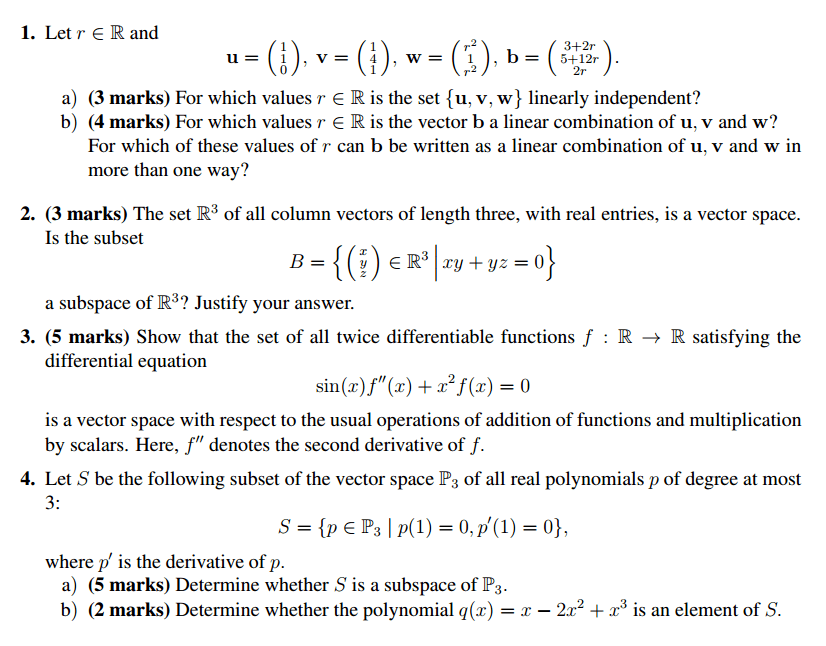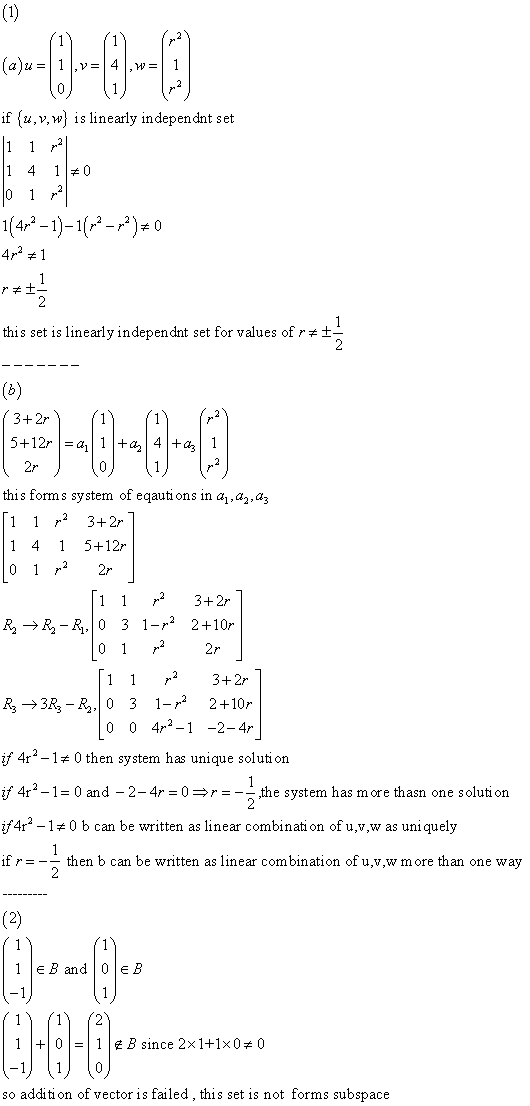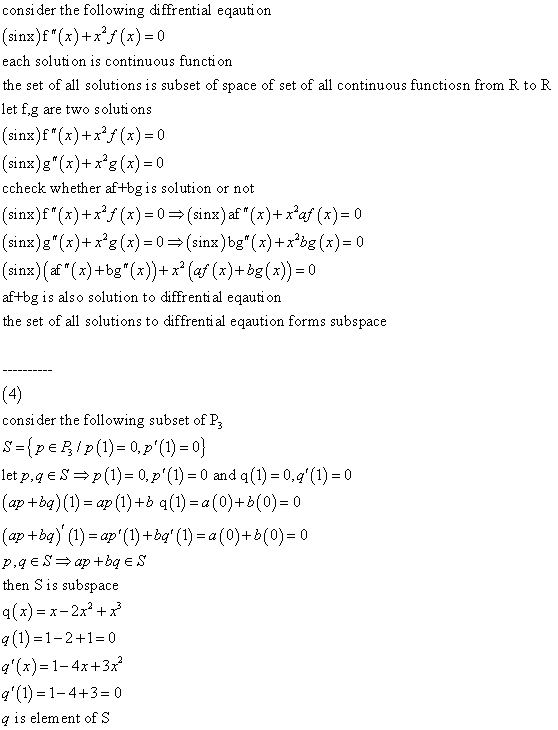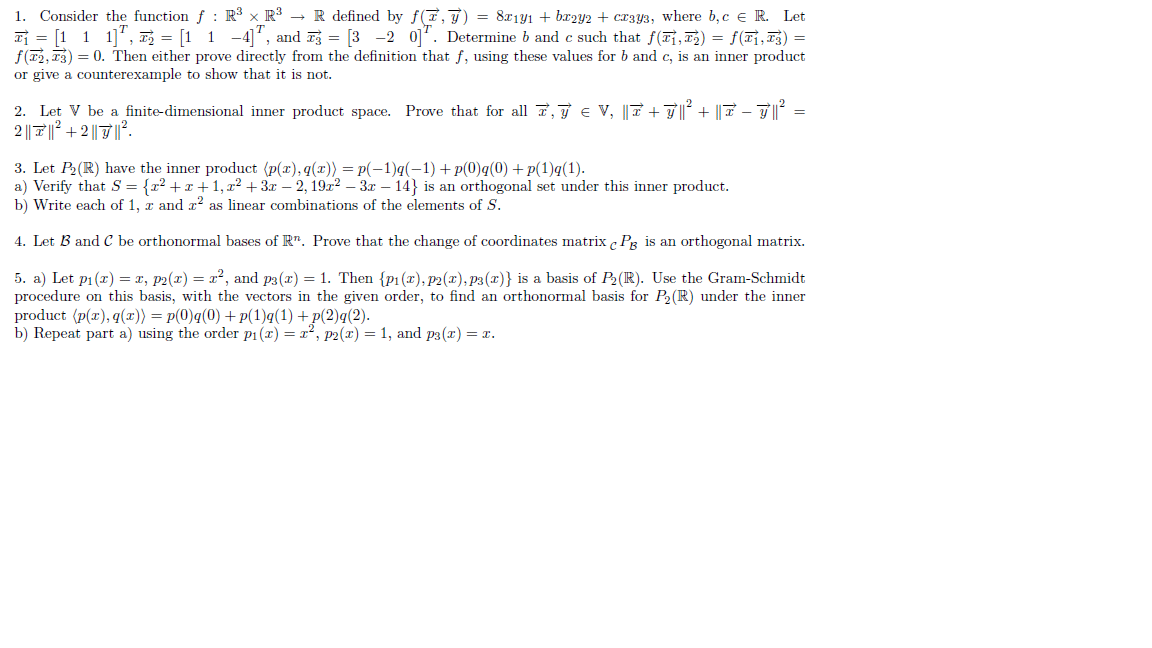Solution to (a). Let f(x) =(0, x 6= 0 1 x = 0 and g(x) =(0, x 6= 0 2 x = 0 . Then limxâ0 f(x) = 0 and limxâ0 g(x) = 0. However, if x 6= 0, then g(f(x)) = g(0) = 2, so that limxâ0 g(f(x)) = 2 6= 0. Solution to (b). If both f and g are continuous, then f(p) = q and g(q) = r. The limit limxâp g(f(x)) = r = g(f(p)) holds by Theorem 4.3.9. Solution to (c). Assume f is continuous. Then q = f(p). Let ε > 0. there is a Ï > 0 such that |g(x) â r| < ε whenever 0 < |x â q| < Ï. By the continuity of f, there is a δ > 0 such that |f(x)âf(p)| < Ï whenever |xâp| < δ. Hence, if 0 < |xâp| < δ, then |f(x)âf(p)| = |f(x)âq| < ε, so that |g(f(x))âr| < ε. This shows that limxâp g(f(x)) = r. If g is continuous, then r = g(q). We have then limxâp g(f(x)) = g(limxâp f(x)) = g(q) = r.
Solution to (a). Let f(x) =(0, x 6= 0 1 x = 0 and g(x) =(0, x 6= 0 2 x = 0 . Then limxâ0 f(x) = 0 and limxâ0 g(x) = 0. However, if x 6= 0, then g(f(x)) = g(0) = 2, so that limxâ0 g(f(x)) = 2 6= 0. Solution to (b). If both f and g are continuous, then f(p) = q and g(q) = r. The limit limxâp g(f(x)) = r = g(f(p)) holds by Theorem 4.3.9. Solution to (c). Assume f is continuous. Then q = f(p). Let ε > 0. there is a Ï > 0 such that |g(x) â r| < ε whenever 0 < |x â q| < Ï. By the continuity of f, there is a δ > 0 such that |f(x)âf(p)| < Ï whenever |xâp| < δ. Hence, if 0 < |xâp| < δ, then |f(x)âf(p)| = |f(x)âq| < ε, so that |g(f(x))âr| < ε. This shows that limxâp g(f(x)) = r. If g is continuous, then r = g(q). We have then limxâp g(f(x)) = g(limxâp f(x)) = g(q) = r.



